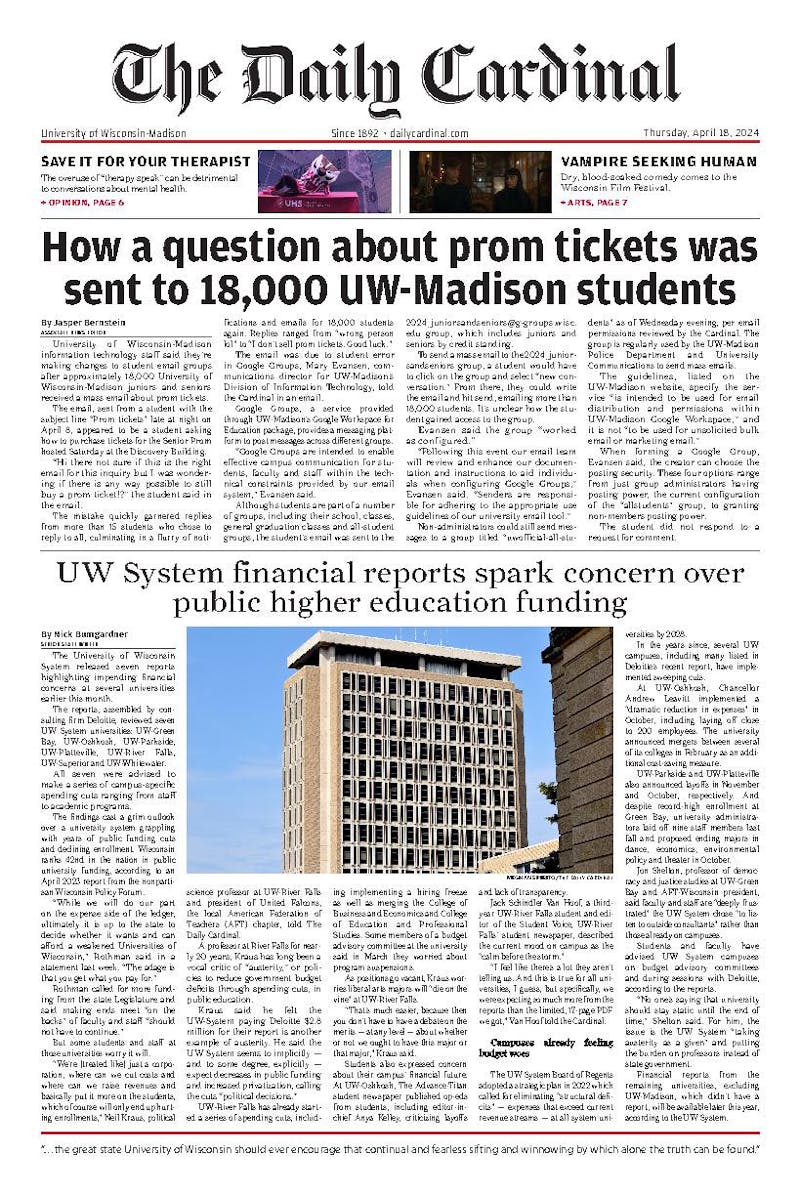Madison: 150 years of history
Part three of a semester-long seriesStroll through Mansion Hill Inn, 424 N. Pinckney St., and you just might get a taste of the city's neighborhood in its thriving days. Although it has lost its horse stable from the 19th century, it reminds guests of the rich history of the Mansion Hill neighborhood.
The area, once called Big Bug Hill,\ was home to the most prominent families in Madison from the 1850s to the start of World War II. Its proximity to Capitol Square attracted the city's first settlers, with the richest building near the inn and on Wilson Street.
""This is where the movers and shakers of early Madison lived,"" said Joe DeRose, historian at the Wisconsin Historical Society, 816 State St. He adds that most of the houses have since been divided into rental apartments and have changed significantly from the horse and buggy days.
Early inhabitants purchased as many as four lots of land on which to build mansions and carriage houses or barns. Many were constructed of sandstone like Mansion Hill Inn.
""They tended to be really nice examples of architecture styles that were popular in the Victorian era,"" said Kitty Rankin, preservation planner for the city of Madison. One architectural firm, Kutzbock-Donnel, built approximately six of the mansions. August Kutzbock and Samuel H. Donnel were famous for building the Capitol building that burned down in 1904 and designing Madison's first City Hall.
Among the most well-known residents from New York was Napoleon Bonaparte Van Slyke.
DeRose labels him ""the greatest name in Madison history"" and notes that he owned more than one house on Mansion Hill. Van Slyke moved to Madison in 1853, was a member of the UW Board of Regents for about 30 years and helped establish Camp Randall as a military training base.
Not long afterward, the Big Bug neighborhood began to change.
""At the turn of the century, Madison had a huge boom period, and there was such a demand that property owners started to sell off the side yards,"" said Rankin. ""Whole new turn-of-the-century buildings got built there.""
The rapid development continued until the stock market crash in 1929. Then mansions were divided into apartments, little or no maintenance was done on the buildings, and other residents moved to the suburbs of Madison. By the 1960s, the buildings had deteriorated.
""Property owners were still operating under the assumption that someday the old building would go and there would be something big and new put on the site, so they didn't spend a lot of time on maintenance,"" Rankin said.
Then in the 1970s, residents became interested in the mansions. Students living in the apartments wanted the old hardwood floors and nice trim, and others in the neighborhood joined the fight to restore the mansions.
Today, some mansions have been remodeled to resemble their original appearance and are now single-family homes. At the Mansion Hill Inn, former residents frequent their old stomping grounds.
A hallmark of the era in which it was built, the inn also has an underground passage, now boarded up, that linked the main building to the house across the street, where residents could be safe from Indian attacks.
""We get a lot of people to come back and stay at the Inn, and they pick the same room they stayed in while they were at school in the [1970s],"" said Stacy Cook, assistant manager.
\





